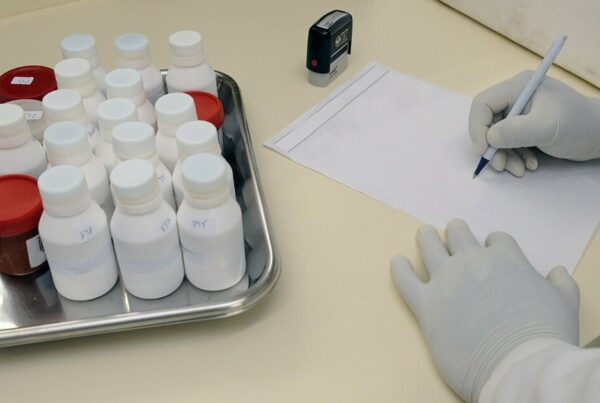You may have heard the term clinical trial protocol, but what exactly does it mean? What goes into writing a clinical trial protocol, and how is it used? In this article, we will answer all of these questions while also providing an example of a clinical trial protocol. Clinical trials are experiments conducted on human participants to determine the safety and efficacy of potential medical treatments.
Clinical Trial Protocol: An Introduction
What is a clinical trial protocol? It’s essential to have a clear definition of what a protocol is, who’s usually in charge of writing the document, and how they are defined. In addition, we can take an example of a clinical trial protocol below to help us better understand what one looks like.
Clinical trials help researchers collect information that allows them study new drugs and therapies for various medical conditions. Many times when you go to your doctor for a prescription or visit their website, you will notice that one of their services includes conducting clinical trials. Clinical trials help researchers collect information that allows them study new drugs and therapies for various medical conditions.
Clinical trial protocols are a set of instructions that help explain to researchers and scientists how a clinical trial is supposed to be carried out. The clinical protocol includes explaining things like what kind of patients are needed for inclusion in a particular clinical trial, what outcomes researchers want to measure, and so on. They can be beneficial to those performing the trial since they will detail precisely how a clinical trial should go from start to finish.
Now that we have some idea of what clinical protocols are let’s go over what it takes to make a good one. There are two different goals for writing a clinical protocol:
- The first is helping with ensuring high-quality data so that researchers can get good results and reliable conclusions from their trials. This is because a poor-quality protocol may yield misleading results.
- The second goal for writing a clinical protocol is to create an easy-to-follow plan so that people involved in carrying out the trial know exactly what they should do at every step . For example, if everyone knows when samples are supposed to be collected or data should be collected by, then researchers can be sure that things were done correctly.
Writing clinical trial protocols is an essential part of conducting high-quality research and getting results that can be relied on. That’s why it’s vital to ensure that all protocol writers are qualified, both in terms of knowledge and experience.
Clinical trial protocol writers must have access to up-to-date medical information to provide accurate descriptions of treatments and procedures. It’s also helpful if they understand what makes for a good clinical trial so that they can design one correctly. Furthermore, it’s important to create easy-to-follow protocols since people who are involved in carrying out clinical trials need to be able to follow them exactly as written, or things may go wrong.
Clear instructions are helpful when it comes to writing clinical trial protocols. It’s important to avoid confusing terminology and technical language so that participants will know exactly what is expected of them. In addition, you can also make sure that clinical protocol templates have an organized structure so they are easier to follow. You should always include definitions for any terms or abbreviations used in your clinical protocol so people involved in carrying out the research don’t have to go hunting around for a definition.
Who Writes The Clinical Trial Protocol?
Clinical trial protocols are written by clinical research experts who have experience in statistical analysis and other aspects of pharmaceutical development. These individuals have training in biostatistics, molecular biology, and experimental design. They must also be familiar with regulations pertaining to clinical trials, such as regulations and guidelines from international agencies like ICH, U.S. Federal Rules (including those outlined by CITI), International Federation of Pharmaceutical Manufacturers Associations, and more. The clinical protocol writer is also responsible for ensuring that all information in a clinical trial protocol adheres to any applicable laws and regulations, including copyright law.
The Clinical Research Associate (CRA) is responsible for writing clinical study protocols and ensuring that all aspects of a clinical protocol adhere to local, national, and international regulations. Clinical research experts must also ensure that their findings are credible and not biased, which requires them to have a good understanding of how to write clinical trial reports.
CRAs work with medical researchers, health professionals, and other individuals involved in drug development daily. As such, they must be able to multitask effectively as well as meet tight deadlines in order to succeed in their careers as clinical research associates. Individuals interested in becoming CRAs typically earn Bachelor’s degrees from accredited colleges or universities before seeking employment at pharmaceutical companies or academic institutions.
Clinical research associates are responsible for ensuring that clinical trial protocols adhere to all applicable laws and regulations. This requires that CRAs have thorough knowledge of regulatory requirements as well as of clinical trial design, specifically how randomized controlled trials work.
A good clinical protocol writer is also familiar with many of pharmaceutical development’s different stages, including how a company goes about conducting initial preclinical research on experimental treatment and what steps are required in order to conduct a Phase III study. Other aspects that CRAs need to be familiar with include how to monitor patients during trials in addition to practical strategies for recruiting participants who will serve as test subjects.
Clinical trial protocols include several types of information, such as a clinical trial introduction, methods and materials section, and a conclusion or discussion. For example, each of these sections should contain specific data on how many subjects were involved in a clinical trial.
It is important that clinical research associates are familiar with techniques for generating numbers randomly without bias. CRAs must be well versed in probability distributions like Poisson distribution as well as understand how to use tools like calculators to work out binomial probabilities and calculate sample means. Clinical protocol writers must also be able to work effectively with other individuals involved in drug development on a daily basis by communicating their findings via written reports and group meetings.
Writing a clinical protocol is not an easy task. It requires individuals to have extensive knowledge of various elements, including how to design and conduct studies as well as how best to communicate research findings. Since clinical trials are subject to regulations established by regulatory bodies and can involve hundreds or even thousands of patients, it is important that CRAs working on these types of projects are meticulous in their work.
An individual’s success in his or her career as a CRA will depend on whether they have what it takes to follow all applicable laws and regulations when writing clinical protocols for new drug applications (NDAs) and other applications seeking approval from regulators. It helps if CRAs are able to multitask effectively while also meeting tight deadlines with ease.
Clinical Protocol Best Practices
With today’s booming medical research industry, clinical trials are ever-present and necessary. But how do you ensure that your study is valid? There are a few considerations that must be made to write a clinical protocol. The clinical trial protocol may need to be written differently based on the phase that the trial is in.
Phase I clinical trials are exploratory in nature. They are often held for shorter periods than later phases and involve small sample sizes. Trials in Phase I may be used to confirm dose-response relationships and check initial side effects, establish pharmacokinetics, and/or to try out new methods that have not yet been tried in a preliminary way on humans or animals. In Phase I, drugs can be given in many different ways: intravenously, orally, via inhalation, or even directly into a specific body cavity. Newer drug delivery methods such as subcutaneous implants and transdermal patches may also be tried during Phase I clinical trials.
Phase II clinical trials are held to determine preliminary efficacy and safety. The same rules for participant eligibility apply as in Phase I, but far more people may be included in a Phase II trial than in a Phase I trial. The goal of Phase II is to establish dosage, explore side effects, and set up future larger studies. It’s common for people participating in Phase II trials to continue treatment with an experimental drug if they completed a successful first phase of treatment. In fact, these completed responders often serve as baseline comparisons to non-responders who are trying out new therapies during a later stage of research.
Phase III clinical trials are held to determine efficacy and safety in a broader group of people, including anyone who might ultimately be treated with an experimental drug. Because Phase III trials include such large groups of participants, they may take place at multiple locations or facilities and last for years. Although single centers may host Phase II trials, later phases are held by centralized research organizations or CROs (Contract Research Organizations). Drug manufacturers can contract with CROs to manage studies and obtain FDA approval for new drugs.
Phase IV clinical trials follow FDA approval of a drug. They’re held to monitor safety over a longer period and are usually mandatory. Phase IV trials can include large-scale, long-term studies in which thousands of people take a new medication for many years. Most participants are healthy, but some may have preexisting conditions. These studies are intended to determine whether any serious side effects occur over a prolonged period or if there are changes in medical parameters that occur without associated symptoms (for example, increased blood pressure or decreased kidney function). These so-called silent effects do not immediately affect patients’ quality of life but could indicate future problems that need addressing.
Phase V clinical trials are similar to Phase IV studies but focus on drug withdrawal rather than additional treatment. In other words, participants already taking a medication may be monitored to ensure they’re safely withdrawn from it after a certain time period. Phase V clinical trials are rare and are typically held when very serious concerns have been raised about the long-term safety or efficacy of a particular medication. These types of studies help researchers determine if an experimental drug should be made available for prescription or discontinued due to safety concerns.
Clinical Trial Protocol Example
A great example of a clinical trial protocol can be found on ClinicalTrials.gov. This example shows us what a clinical protocol should contain. The format varies from country to country but usually follows a similar structure. There are additional regulations to keep in mind when performing an international study such as the language to use during the study and how to manage following different regulations in each country. In the United States the overview looks like:
- Objective/Background
- Population (subjects)
- Intervention
- Comparator
- Primary and Secondary Outcomes
- Results and Conclusions
Tips For Writing Better Clinical Trial Protocols
While some clinical protocols are a joy to read, others make your eyes glaze over. If you’re about to embark on writing one for your next study, here are some tips to keep in mind so that your protocol doesn’t fall into one of those latter categories.
The design and reporting of randomized trials have evolved over time in an effort to improve how we allocate treatments and follow-up patients. While protocol development guidelines often include recommendations regarding design, reporting, and clinical trial conduct considerations, every protocol is unique and will require you to make choices for your study based on its specifics.
A common thread, however, is that clinical protocols tend to follow a format or template, see above, which provides a framework for structuring content. For example, when developing your study’s methods section, you’ll find there are several important concepts which are frequently addressed across protocols but differ from one study to another.
If you’re new to clinical trial protocol writing, keep in mind that it doesn’t need to be perfect before submission. There is an expectation that protocols will change over time, even if they have been published in peer-reviewed journals and are available for public access.
It is common practice for protocols to have a number of corrections and amendments made after publication and there are no specific rules or guidelines regarding what needs to be included in these updates as long as they comply with regulatory requirements. Therefore, small changes (including corrections of typographical errors) can be made at any time, while larger changes should only be made when study conduct has been completed.
Here are some tips to keep in mind when writing a clinical trial protocol:
- Study Components Sample Size Determination: Your planned sample size is an important component of your protocol that helps to define a number of key elements for your study (e.g., how many centers you will include, how long participants will be followed after completion of data collection). Small sample sizes can restrict generalizability and power, while larger ones can increase both costs and risks related to recruitment and follow-up rates while also increasing complexity in analyses due to higher numbers of variables compared with smaller studies.
- Study Design Key Considerations in Study Design: One of your primary considerations when designing a clinical trial is how to ensure safety and minimize harm to participants, as well as to ensure your ability to draw accurate conclusions that can be generalized beyond your specific study population. You should select study design elements that are best suited for answering your research question(s) and for ensuring safety by including a large enough sample size and allowing sufficient time for adverse events or other harms to occur, if they are likely.
- Participant Characteristics and Types of Participants: The types of participants you recruit for your study will influence a number of factors, including risks, costs, and practical considerations such as location or transportability. For example, having multiple study sites may increase recruitment efforts, but it also raises practical issues related to site coordination and training staff at multiple locations with differing protocols. Recruiting participants from across different regions increases sample variability compared with local recruitment but also increases transportation costs due to longer distances between sites and more complex logistics than within a single city or region.
- Study Intervention: Your protocol should include a clear description of what participants will be exposed to during your study. The intervention in clinical trials is often one or more drugs or other products but can also include medical devices, biologics, nutrition or lifestyle interventions, and even surgical procedures.
Clinical trial protocols are detailed and meticulous, but they provide helpful information to all involved in the trial. There may be several revisions before and after publication of the trial. While the Clinical Research Associate may be responsible for writing the initial draft, all healthcare professionals involved in the study should have an opportunity to make suggestions for the document.









